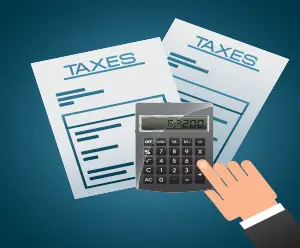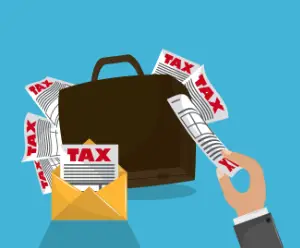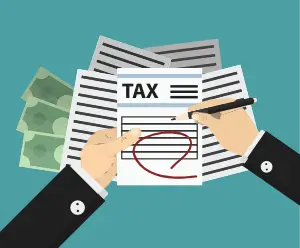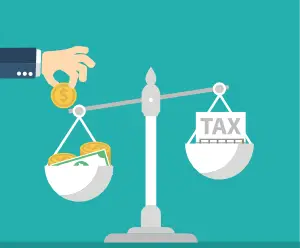
Understanding the IRS Substitute for Return
Click to ask Mike Ask Mike The Internal Revenue Service (IRS) Substitute for Return (SFR) is a term many taxpayers

Recovering an IRS-taken tax refund due to tax debt is indeed possible, but the process is intricate and depends on the specific circumstances leading to the refund offset. Tax refund offsets, also known as tax refund intercepts, occur when the government deducts certain debts or obligations from an individual’s tax refund. While this process is designed to collect unpaid debts, there may be instances when taxpayers wonder if a tax refund offset can be reversed. In this article, we’ll delve into the details of tax refund offsets, the reasons behind them, and the circumstances under which they can be reversed or modified.
Tax refund offsets are a mechanism employed by the government to recover outstanding debts that taxpayers owe to various entities, such as federal or state agencies, child support agencies, or student loan providers. Common reasons for tax refund offsets include:
The ability to reverse or modify a tax refund offset depends on various factors, including the nature of the debt and the specific circumstances of the taxpayer. Here are some scenarios in which a tax refund offset can be reversed or modified:
It’s important to note that the process for reversing a tax refund offset can be time-consuming and may require documentation and communication with the relevant agencies. Timely action and understanding your rights and options are essential. If the IRS seizes your tax refund, click here for instructions.
In summary, tax refund offsets are a mechanism used by the government to collect certain types of debts from taxpayers’ refunds. While they are generally difficult to reverse, it is possible under specific circumstances such as errors, financial hardship, bankruptcy, or the expiration of the statute of limitations. To address a tax refund offset, it’s crucial to communicate with the relevant agency promptly and provide any necessary documentation to support your case. Understanding your rights and options is key to navigating this complex process effectively.
You can now ask our AI assistant any questions you have about your tax debt or any tax-related issues. Whether you’re unsure about payment plans, need clarification on penalties, or want information on how to resolve your tax situation. Our AI is ready to assist you with all your tax-related concerns.

By interacting with our AI assistance, you agree to our terms & conditions. Enjoy our AI Tax Assistant responsibly.
Ask me any questions...
Related Posts

Click to ask Mike Ask Mike The Internal Revenue Service (IRS) Substitute for Return (SFR) is a term many taxpayers

Click to ask Mike Ask Mike The Internal Revenue Service (IRS) Substitute for Return (SFR) is a term many taxpayers

Click to ask Mike Ask Mike The Internal Revenue Service typically operates within a 10-year window, commencing from the

Click to ask Mike Ask Mike The Internal Revenue Service (IRS) operates within specific timeframes dictated by statutes of limitations

Click to ask Mike Ask Mike understanding the ins and outs of the 10-year statute of limitations (SOL) is essential.
Recent Posts

Click to ask Mike Ask Mike The Internal Revenue Service (IRS) Substitute for Return (SFR) is a term many taxpayers

Click to ask Mike Ask Mike The Internal Revenue Service (IRS) Substitute for Return (SFR) is a term many taxpayers

Click to ask Mike Ask Mike The Internal Revenue Service typically operates within a 10-year window, commencing from the

Click to ask Mike Ask Mike The Internal Revenue Service (IRS) operates within specific timeframes dictated by statutes of limitations

Click to ask Mike Ask Mike understanding the ins and outs of the 10-year statute of limitations (SOL) is essential.
Disclaimer: This is educational content, not legal, accounting, or tax advice.
This is a tax debt resource website, not to be used in lieu of a tax attorney or for legal advice. All information, Ai chat responses, articles, materials, and content are intended to inform users on a variety of tax topics. In no way is it intended to be construed as accounting, legal, tax, other services or advice. This site is not intended to be used to avoid tax penalties or tax debt that may be imposed by law. Terms and Conditions. Your use of this site constitutes acceptance of the following terms and conditions.
This is a tax debt resource website, not to be used in lieu of a tax attorney or for legal advice. All information, Ai chat responses, articles, materials, and content are intended to inform users on a variety of tax topics. In no way is it intended to be construed as accounting, legal, tax, other services or advice. This site is not intended to be used to avoid tax penalties or tax debt that may be imposed by law. Terms and Conditions. Your use of this site constitutes acceptance of the following terms and conditions.
© 2023 · Tax Debt Monster, Inc. All rights reserved

For all Tax Professionals that would like to partner up with us. By partnering with us, you’ll help us connect and make a positive impact in the tax community. Partner up with us and receive a complimentary Ai Tax Sidekick to help support your clients at no cost! Click here if you’re interested in our Partner-Up program

By interacting with our AI assistance, you agree to our terms & conditions. Enjoy our AI Tax Assistant responsibly.
How may I help you with your tax issue?